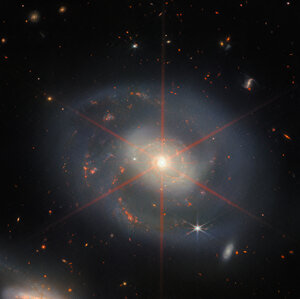Accept all cookies Accept only essential cookies See our Cookie Notice

About ESA
The European Space Agency (ESA) is Europe’s gateway to space. Its mission is to shape the development of Europe’s space capability and ensure that investment in space continues to deliver benefits to the citizens of Europe and the world.
Highlights
ESA - United space in Europe
This is ESA ESA facts Member States & Cooperating States Funding Director General Top management For Member State Delegations European vision European Space Policy ESA & EU Space Councils Responsibility & Sustainability Annual Report Calendar of meetings Corporate newsEstablishments & sites
ESA Headquarters ESA ESTEC ESA ESOC ESA ESRIN ESA EAC ESA ESAC Europe's Spaceport ESA ESEC ESA ECSAT Brussels Office Washington OfficeWorking with ESA
Business with ESA ESA Commercialisation Gateway Law at ESA Careers Cyber resilience at ESA IT at ESA Newsroom Partnerships Merchandising Licence Education Open Space Innovation Platform Integrity and Reporting Administrative Tribunal Health and SafetyMore about ESA
History ESA Historical Archives Exhibitions Publications Art & Culture ESA Merchandise Kids Diversity ESA Brand Centre ESA ChampionsLatest
Space in Member States
Find out more about space activities in our 23 Member States, and understand how ESA works together with their national agencies, institutions and organisations.
Science & Exploration
Exploring our Solar System and unlocking the secrets of the Universe
Go to topicAstronauts
Missions
Juice Euclid Webb Solar Orbiter BepiColombo Gaia ExoMars Cheops Exoplanet missions More missionsActivities
International Space Station Orion service module Gateway Concordia Caves & Pangaea BenefitsLatest
Space Safety
Protecting life and infrastructure on Earth and in orbit
Go to topicAsteroids
Asteroids and Planetary Defence Asteroid danger explained Flyeye telescope: asteroid detection Hera mission: asteroid deflection Near-Earth Object Coordination CentreSpace junk
About space debris Space debris by the numbers Space Environment Report In space refuelling, refurbishing and removingSafety from space
Clean Space ecodesign Zero Debris Technologies Space for Earth Supporting Sustainable DevelopmentApplications
Using space to benefit citizens and meet future challenges on Earth
Go to topicObserving the Earth
Observing the Earth Future EO Copernicus Meteorology Space for our climate Satellite missionsCommercialisation
ESA Commercialisation Gateway Open Space Innovation Platform Business Incubation ESA Space SolutionsEnabling & Support
Making space accessible and developing the technologies for the future
Go to topicBuilding missions
Space Engineering and Technology Test centre Laboratories Concurrent Design Facility Preparing for the future Shaping the Future Discovery and Preparation Advanced Concepts TeamSpace transportation
Space Transportation Ariane Vega Space Rider Future space transportation Boost! Europe's Spaceport Launches from Europe's Spaceport from 2012Latest

ZS7 location in PRIMER image (NIRcam image)
Thank you for liking
You have already liked this page, you can only like it once!
This image shows the location of the galaxy system ZS7 from the JWST PRIMER programme (PI: J. Dunlop). New research using the NIRSpec instrument on the NASA/ESA/CSA James Webb Space Telescope have determined the system to be evidence of an ongoing merger of two galaxies and their massive black holes when the Universe was only 740 million years old. This marks the most distant detection of a black hole merger ever obtained and the first time that this phenomenon has been detected so early in the Universe.
The team has found evidence for very dense gas with fast motions in the vicinity of the black hole, as well as hot and highly ionised gas illuminated by the energetic radiation typically produced by black holes in their accretion episodes. Webb also allowed the team to spatially separate the two black holes and determined that one of the two black holes has a mass that is 50 million times the mass of the Sun. The mass of the other black hole is likely similar, although it is harder to measure because this second black hole is buried in dense gas.
In this Webb NIRCam image, the ionised hydrogen (Hβ) emission in the ZS7 system is identified by the orange region and the doubly ionised oxygen (OIII) emission is visible in dark red (right image).
[Image description: Three panels are shown showing an increasingly small area of the PRIMER galaxy field. The first image shows a large field of galaxies on the black background of space. The second image shows a smaller region from this field, revealing the galaxies in closer detail, appearing in a variety of shapes and colours. The final image shows the ZS7 galaxy system, revealing the ionised hydrogen emission in orange and the doubly ionised oxygen emission in dark red.]
-
CREDIT
ESA/Webb, NASA, CSA, J. Dunlop, H. Übler, R. Maiolino, et. al -
LICENCE
CC BY 4.0 INT or ESA Standard Licence
(content can be used under either licence)

ZS7 environment (NIRcam image)

A wreath of star formation

The hidden intricacies of Messier 106

Slider Tool (Webb NIRCam images)















 Germany
Germany
 Austria
Austria
 Belgium
Belgium
 Denmark
Denmark
 Spain
Spain
 Estonia
Estonia
 Finland
Finland
 France
France
 Greece
Greece
 Hungary
Hungary
 Ireland
Ireland
 Italy
Italy
 Luxembourg
Luxembourg
 Norway
Norway
 The Netherlands
The Netherlands
 Poland
Poland
 Portugal
Portugal
 Czechia
Czechia
 Romania
Romania
 United Kingdom
United Kingdom
 Slovenia
Slovenia
 Sweden
Sweden
 Switzerland
Switzerland

























